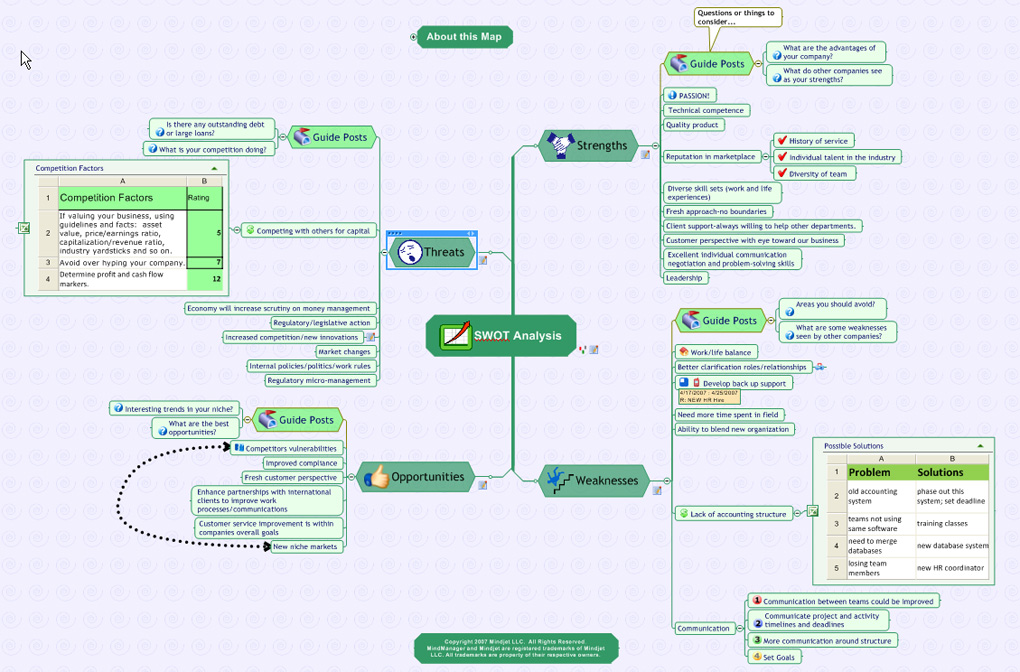
A SWOT analysis is a popular business planning tool that is used to determine an organization’s current Strengths, Weaknesses, Opportunities and the Threats it faces – hence the SWOT moniker. A mind map is a terrific tool to perform this type of analysis, because it can capture so much information in a compact space. It also enables you to see connections between disparate pieces of information.
The SWOT analysis above was created by Michael Deutch at Mindjet, and it is located on BiggerPlate.com, an online community for sharing MindManager maps. There is much we can learn by taking a look at how Michael has structured his map:
1. Each of the four areas of inquiry – strengths, weaknesses, opportunities and threats – are placed on a main branch.
2. Next, items that describe your organization’s current situation for that element are listed in sub-topics. If you have more details that you want to record, those can be captured in notes, as Michael has done under “threats-increased competition/new innovations.”
3. Michael uses “guide post” questions as part of his SWOT template map to help him to flesh out each part of the map as completely as possible. Note how he has formatted each of these “guide post” sub-topics in a hexagonal shape and a different background color, to make them stand out.
4. Michael also makes use of call-out topics to draw attention and emphasis to specific topics, and relationship lines to connect related topics.
5. Supporting data – in this case, two spreadsheet ranges – are incorporated into the map to provide valuable supporting data. Note also how several other topics have been converted into tasks, and contain icons depicting percentage of completion.
In short, this map communicates a wealth of information with a high degree of clarity – in a much more usable form than a 15-20 page, single-spaced document!
If you are a MindManager user and download this file from BiggerPlate.com as a MindManager .mmap file, you can easily trim Michael’s map down to the four main topics and guide post questions, and use them as a template for your own SWOT analysis.

Leave a Reply